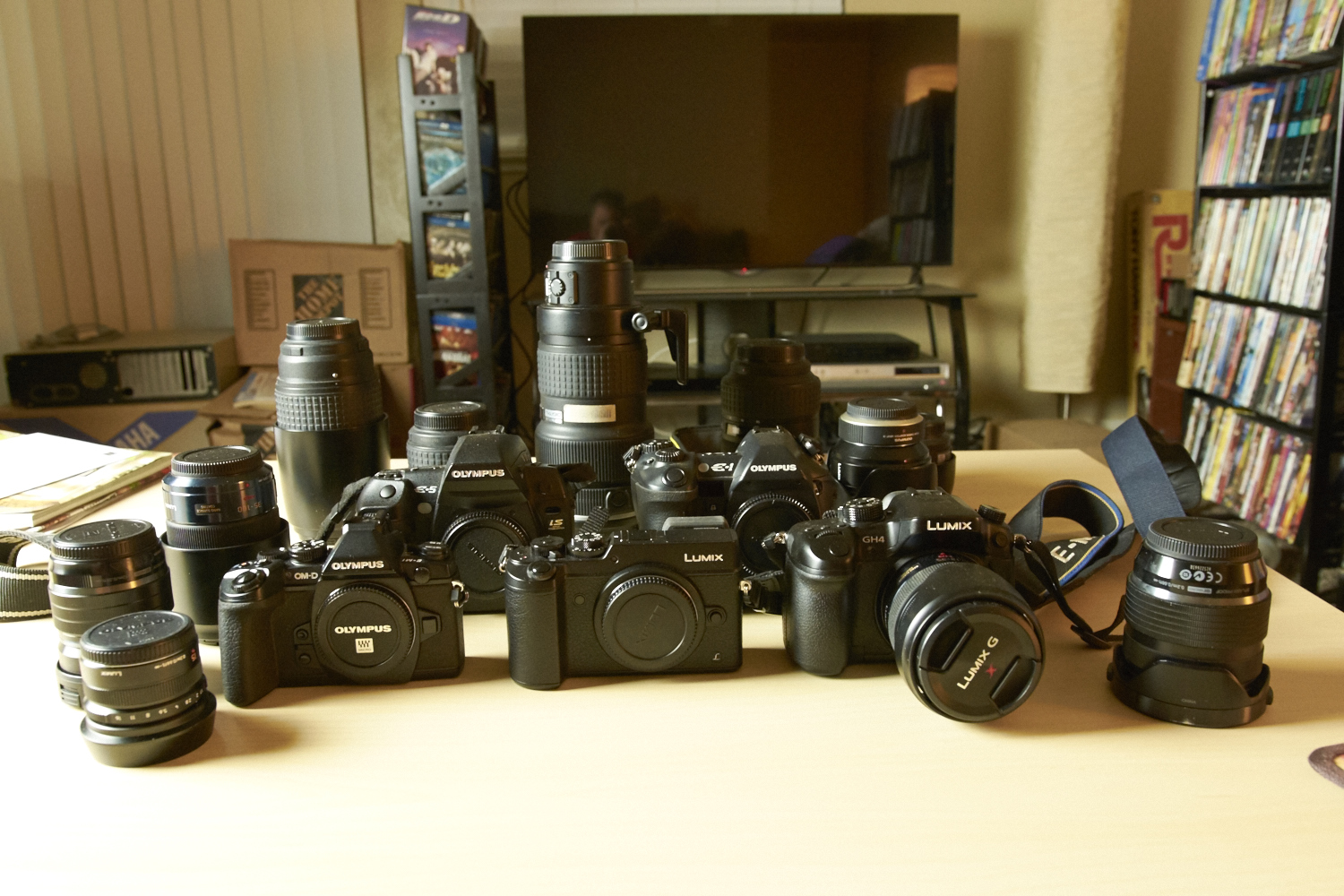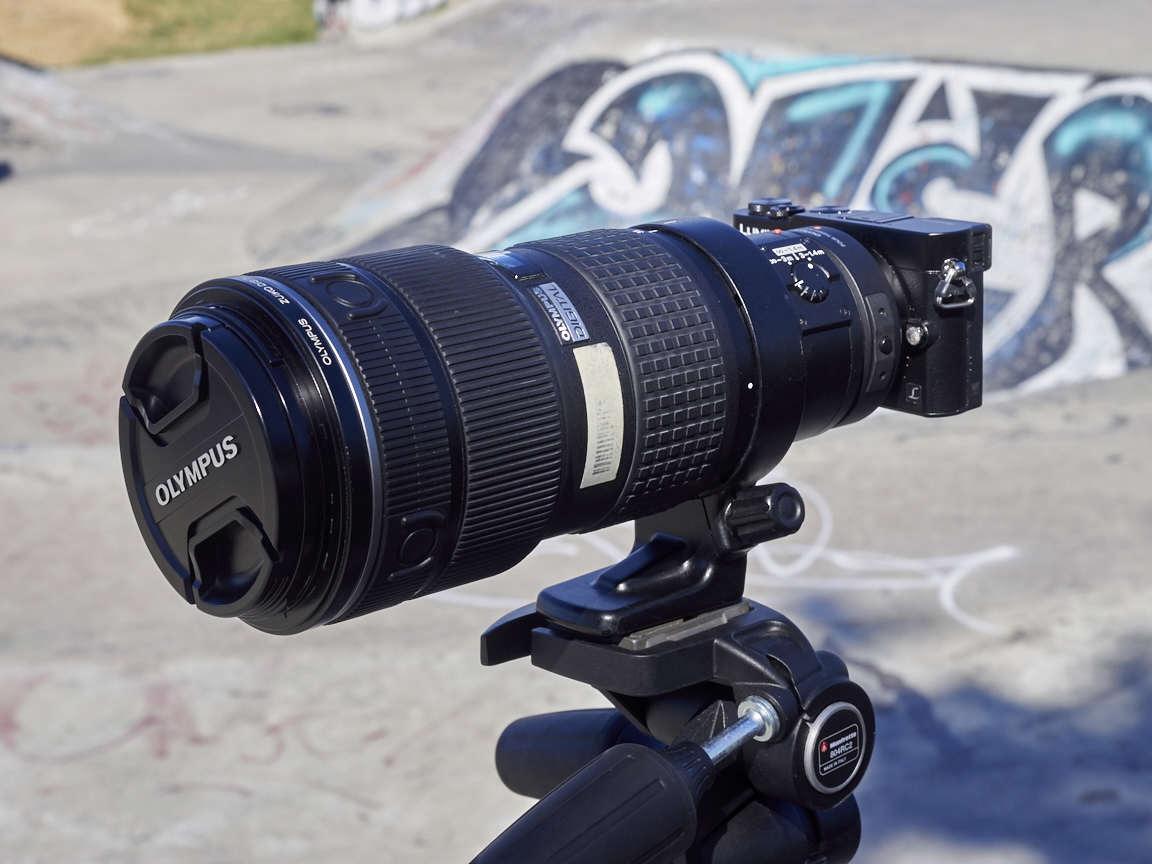Panasonic micro Four-Thirds to Panasonic 135 Format
I've recently made the jump to the Panasonic Lumix S5 Mk II after quite a while with Four-Thirds and micro Four-Thirds using Panasonic and Olympus equipment.
I've heard people going on about "Full Frame" for the last 20 years, even if they didn't have any of the products. I used 135 Format back in my film days. I couldn't wait to get rid of film after spending 6 hours at a time repairing scanned photos and/or negatives.

I got into Four-Thirds in 2004 and into micro Four-Thirds in 2012. I got into video in late 2014 with the Panasonic GH4, even though the GH3 was fully capable of 1080p recording.
For US$1699, the GH4 was an overachiever. It's still impressive but the goals have changed, and 4K is more easily achievable with a 4K TV in many homes. Fast forward to 2024 when I saw a deal for the Panasonic S5 Mk II with 50mm f/1.8 and 20-60mm f/3.5-5.6 lenses for US$2247.99. The S5 Mk II body itself really isn't much more expensive than the GH4 was in 2014.
I almost bought the G9 Mk II because there was an incredible trade-in deal and I would have saved a lot of money, and wouldn't be looking for lenses. However, I wanted something different, and I wanted to keep my Panasonic GM5.
Still, I wanted two things from a new camera body: PDAF and IBIS.
The G9 Mk II and the S5 Mk II have both and they're the best that Panasonic has done. I could have bought an older, used body without the PDAF but I struggled on occasion with the GH4 and the GX8. I recorded video on the GH4 quite a bit. I was photographing a scooter tournament at Woodward West with the GH4 taking video and the Olympus E-M1 taking still photos--the best tools for the job. At a later date, I went back to photograph a free day there and took a Nikon D7200, as well. It could not keep up.
I've had the S5 Mk II for a couple of weeks. It's a handful. Getting it set like the GH4 has been an incremental process. It's worked beautifully during the day and struggled at night. For all those people chanting "Full Frame", telling me that micro Four-Thirds wasn't getting enough light, each sensor needs the same exposure to light. The Panasonic 50mm f/1.8 on 135 Format is more difficult at night than my Leica/Panasonic 25mm f/1.4 was. Depth of Field doesn't matter if you can't get the shot. Image quality doesn't matter if you can't get the shot.
The difference between the Panasonic 50mm f/1.8 and the 50mm f/1.4 Pro lenses is about US$1500. Holy !@#$ I might as well go another thousand or two for the Leica lens. I really miss my designed-by-Leica-hand-assembled-by-Panasonic 25mm f/1.4 that was a Four-Thirds lens designed for the Leica Digilux 3. I was so afraid to take it out in bad weather, though. There was no weather-sealing at all.
Converting from the GH4, I am reminded that the video is going to be an easier transition than the still photography will be. I haven't worked with a 3:2 ratio since 135 Format film. Four-Thirds and micro Four-Thirds used 4:3 ratio, just like Medium Format. Kodak, the maker of the original sensors, was big in Medium Format.
Now, the big deal is the weight of the lenses. If you look back at the family portrait photo at the beginning, you'll notice the rather big lens. That was an Olympus SHG ZD 35-100mm f/2.0 lens. I would say that it's the finest lens I've used on any equipment. It has a 77mm filter size and it is heavy. The rest were quite easy to hand hold without IBIS or OIS but I handheld the 35-100mm f/2.0 on an Olympus E-5 to photograph swimming and basketball. I did not handhold it with any micro Four-Thirds body, including the E-M1 that was supposed to support all of the SHG lenses but was far too small for reasonable balance.

The Panasonic 50mm f/1.8 and 20-60mm f/3.5-5.6 are big and heavy for their apertures. They're weather-sealed and have Auto Focus, but they are shamefully large compared to lenses from the 1970s. Find a 50mm f/1.2 from Nikon, Olympus, or Canon and you'll find them rather small. Obviously, there were no electronic connections, no AF, no weather-sealing, but the optics were good, not great. A maximum aperture of f/1.2 meant that f/2.0 was good; f/1.4 meant that f/2.8 would be good, and it wouldn't be until later that there were amazing, regardless of the price.
Panasonic seems to be pushing daytime performance. The usual f/1.4 lenses aren't there, except for the 50mm f/1.4. As well, the telephoto zooms are few, although that's not unusual for Panasonic. I like that they all work with Dual I.S. so that the lens OIS works in conjunction with the IBIS and you can get a sharp image because of stabilization.
One thing I might do is to buy an adapter and use Canon or Nikon dSLR lenses. With micro Four-Thirds, you could buy an adapter with a focal reducer for increased effective apertures. No such tricks exist from 135 Format to 135 Format.
There are a few Chinese brands such as 7artisans, TTartisan, and Meike that are starting to make manual lenses for L-mount. Meike I trust. I had a 7artisans 55mm f/1.4 for micro Four-Thirds and it was good but heavy. The lens reviews I've seen for 7artisans and TTartisan seem evenly good and bad. Some seem to mention "falling apart", which doesn't give me confidence. Samyang has a 35-150mm f/2.0-2.8 that is appealing, if I can work with the weight. It also has auto focus, but I'll probably need a tripod or monopod to use it.
